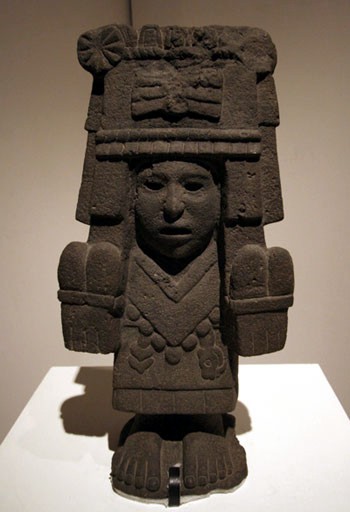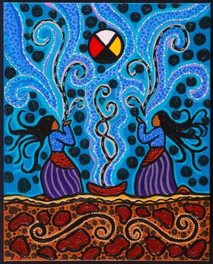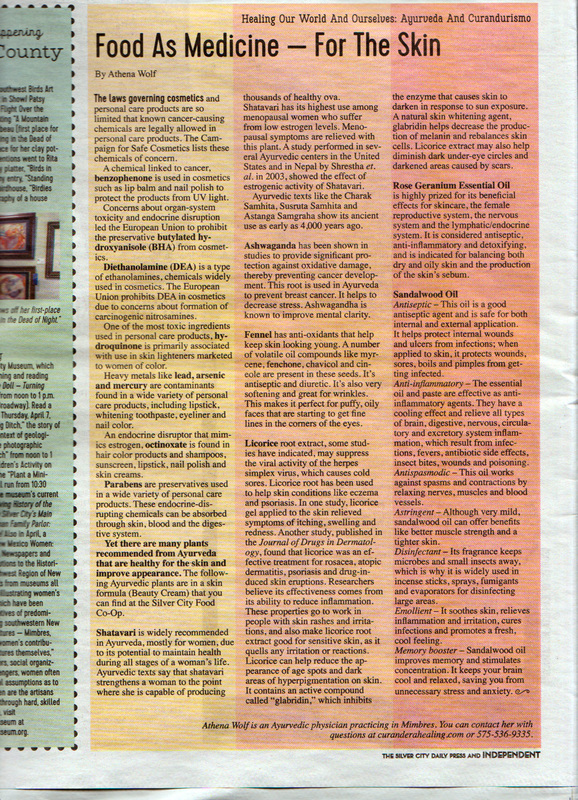There are safe and effective herbs for parasites. These are some results of the use of the chemical, Ivermectin
FROM THE DRUG COMPANY WHO MANUFACTURES IT.
This MSDS is from ThermoFisher Scientific (The Materials Safety Data Sheet is submitted by drug companies to the FDA)
Handling- Wear personal protective equipment/face protection. Do not get in eyes, on skin, or on clothing. Avoid dust formation. Use only under a chemical fume hood. Do not breathe (dust, vapor, mist, gas). Do not ingest. If swallowed then seek immediate medical assistance.
https://www.fishersci.com/store/msds?partNumber=AAJ6277703&productDescription=IVERMECTIN+1G&vendorId=VN00024248&countryCode=US&language=en
This is a report from Merck, the giant pharmaceutical company that manufactures this poison.
"KENILWORTH, N.J., Feb. 4, 2021 – Merck (NYSE: MRK), known as MSD outside the United States and Canada, today affirmed its position regarding use of ivermectin during the COVID-19 pandemic. Company scientists continue to carefully examine the findings of all available and emerging studies of ivermectin for the treatment of COVID-19 for evidence of efficacy and safety. It is important to note that, to-date, our analysis has identified:
No scientific basis for a potential therapeutic effect against COVID-19 from pre-clinical studies;
No meaningful evidence for clinical activity or clinical efficacy in patients with COVID-19 disease, and;
A concerning lack of safety data in the majority of studies.
We do not believe that the data available support the safety and efficacy of ivermectin beyond the doses and populations indicated in the regulatory agency-approved prescribing information."
https://www.merck.com/news/merck-statement-on-ivermectin-use-during-the-covid-19-pandemic/
DEATH AND SICKNESS
“Serious Neurological Adverse Events after Ivermectin--
Within the remaining 28 cases, there is supportive evidence for a causative role of ivermectin including presence of the drug in brain tissue in one case and recurrence of symptoms on repeated exposure in three cases”
https://www.ncbi.nlm.nih.gov/pmc/articles/PMC5929173/
In our state two people have died from taking this poison: https://www.kob.com/albuquerque-news/2-new-mexicans-have-died-of-ivermectin-toxicity-state-health-officials-say/6246168/
“Clinical studies of oral ivermectin given in doses from 2 to 200 ðg/kg (maximum 12 mg) have
shown a pattern of adverse experiences that included only one serious event (transient
stupor). The remaining adverse experiences were considered not serious and were chiefly of the
type expected based on the characteristics of the underlying disease and the responses seen
after treatment with other microfilaricidal drugs, except for reports of "depression" (not
psychiatrically tested) in four patients in open studies (MSD, 1988).
Serious neurological adverse events have been reported from large scale community-based ivermectin treatment campaigns against Onchocerciasis volvulus in Africa.
https://www.npr.org/sections/coronavirus-live-updates/2021/09/04/1034217306/ivermectin-overdose-exposure-cases-poison-control-centers
USE FOR COVID
“At the onset of the COVID-19 pandemic, many treatments, including ivermectin, were investigated to determine if they provide any therapeutic benefit in the treatment of SARS-CoV-2. Ivermectin has been shown in laboratory studies to inhibit enzymes responsible for the transport of viral proteins in coronaviruses. While ivermectin is generally well tolerated at doses used for anti-parasite activity, the dosage required to provide anti-viral activity is considerably higher than that which can be safely achieved in humans. The dose used for anti-parasite activity has not been showed to be effective against COVID-19. Clinical trials are still ongoing, however the Infectious Disease Society of America (IDSA) recommends against the use of ivermectin for the treatment of patients with COVID-19 infection both in the inpatient and outpatient setting outside of the context of a clinical trial. This finding was also echoed in a Cochrane Review of the subject, which indicated very low to low certainty evidence regarding the efficacy and safety of ivermectin in the treatment or prevention of COVID-19.” https://med.virginia.edu/toxicology/wp-content/uploads/sites/268/2021/10/Oct21-Ivermectin.pdf
From Healthline: Serious side effects and their symptoms can include the following:
• Pain in your neck and back
• Serious eye problems. Symptoms can include:
o redness
o bleeding
o swelling
o pain
o loss of vision
• Shortness of breath
• Inability to control urination
• Inability to control bowel movements
• Trouble standing or walking
• Confusion
• Extreme tiredness
• Extreme drowsiness
• Seizures
• Coma
• Low blood pressure, especially when you get up after sitting or lying down. Symptoms can include:
o lightheadedness
o dizziness
o fainting
• Severe skin reactions. Symptoms can include:
o severe rash
o redness
o blistering skin
o peeling skin
• Liver damage. Symptoms can include:
o tiredness
o nausea
o vomiting
o loss of appetite
o pain on the right side of your stomach
o dark urine
o yellowing of your skin or the whites of your eyes
The FDA has been warning against the use of ivermectin for treatment of Covid-19 since March. The drug is used to treat parasitic infections, primarily in livestock, and the CDC recently cautioned about an increase in reports to poison centers of severe illness caused by the drug.
Justice of the Peace Eva Madison raised the issue during a county budget hearing in Fayetteville on Tuesday, saying a county employee had told her the jail's medical provider was prescribing ivermectin to treat and prevent Covid-19."https://www.cnn.com/2021/08/26/us/covid-ivermectin-arkansas-doctor/index.html
The claim is about Ivermectin as a prophylactic to prevent getting COVID-19 illness, but the assessment’s language states that it is not an effective ‘treatment against COVID-19.’ Since prophylactic (prevention) is for the well, and treatment is for the sick, confusing these medical uses appears to be sloppy journalism or worse.”
FRONT LINE DOCTORS
The AFLD (Americas Front Line Doctors) who promoted the use of the ineffective and dangerous drug hydroxycholorquine for Covid, is now recommending ivermectin as a treatment for Covid despite this having been publically disproven by open studies conducted under the auspices of the World Health Organization and other medical boards. They continue to question the efficacy of masks, thereby encouraging the spread of the virus. Some of this group is charging naive people $700 to give them a "prescription" for Ivermectin.
https://sciencebasedmedicine.org/ivermectin-is-the-new-hydroxychloroquine-take-3-conspiracy-theories-vs-science/
about FLCC C - https://www.the-scientist.com/.../frontiers-removes....
"Members of Frontiers’s research integrity team identified “a series of strong, unsupported claims based on studies with insufficient statistical significance, and at times, without the use of control groups. Further, the authors promoted their own specific ivermectin-based treatment which is inappropriate for a review article and against our editorial policies. In our view, this paper does not offer an objective nor balanced scientific contribution to the evaluation of ivermectin as a potential treatment for COVID-19.” and a little more ... https://en.wikipedia.org/wiki/Pierre_Kory. Dr Marik "
In March 2021, Marik was reprimanded by the Virginia Board of Medicine and ordered to complete additional education in prescribing practices after it was found he had prescribed drugs, including phenobarbital, oxycodone, tramadol, alprazolam, and diazepam, to people who were not his patients.[18][19]" (from Wikipedia).
These are the fraudulent doctors prescribing Ivermectin. https://time.com/6092368/americas-frontline-doctors-covid-19-misinformation/
There are many doctors making money off of this scam... who are now being caught. "The Arkansas Medical Board is investigating after a doctor said he prescribed an anti-parasitic drug "thousands" of times for treatment of Covid-19, including to inmates in an Arkansas jail.
"The demand is for ivermectin, a drug primarily used to deworm animals that has become the latest false cure for Covid-19. And the website, in partnership with the organization America’s Frontline Doctors, whose founder stormed the U.S. Capitol on Jan. 6, has become well-known in the Facebook groups and Reddit communities where anti-vaccination sentiment thrives. " https://www.nbcnews.com/tech/tech-news/ivermectin-demand-drives-trump-telemedicine-website-rcna1791
The American Medical Association, is calling for the immediate end to the use of the drug ivermectin to treat COVID-19. It’s asking doctors to stop prescribing it for that purpose. The buzz around it surged again after comedian and podcaster Joe Rogan said he was using it to treat his own infection.
This is not a study, but a report. “Health authorities are warning people against self-medicating with a drug which is traditionally used to treat head lice and scabies but is being pushed as a coronavirus treatment, saying it could be fatal.” https://www.abc.net.au/news/2020-04-04/monash-researchers-hopes-for-coronavirus-drug-treatment-warning/12121578
The state health department reports poison control centers already had more than triple the ivermectin exposure calls than they did all of last year. https://www.kxan.com/news/national-news/ivermectin-use-surges-despite-no-evidence-it-treats-covid-19-why-are-people-still-taking-it/
It is rare when the FDA denies any drug. The way the system works is that drug companies "do their own research" then submit it to the FDA for approval. Dozens of drug companies have been caught submitting flawed or sloppy research, hundreds or thousands have not been stopped. The fact that so many are aware of the bias and unconventional "research" done to prove Ivermectin is helpful for covid, and that the FDA says it is not helpful---says something.
So does this article in the Atlantic. https://www.theatlantic.com/science/archive/2021/10/ivermectin-research-problems/620473/
Please read this article from the prestigious Journal Nature about one of the studies that are cited to support the use of the drug.
"Flawed ivermectin preprint highlights challenges of COVID drug studies
The study’s withdrawal from a preprint platform deals a blow to the anti-parasite drug’s chances as a COVID treatment, researchers say." https://www.nature.com/articles/d41586-021-02081-w





 RSS Feed
RSS Feed
